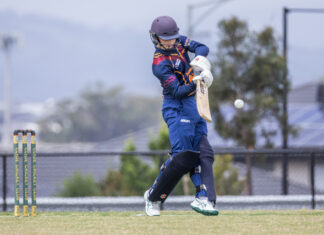By Jim Mynard
ROTARIANS from District 9820 will support a project to build a hospital at the Hohidiai clinic in the remote Halmahera Islands in northeast Indonesia.
Clinic managers Peter and Esther Scarborough established the medical clinic to provide treatment for the poor.
They are overwhelmed with patients and work in rudimentary facilities with little support.
They desperately need a ward where seriously ill patients can be cared for and need basic hospital equipment, an Xray machine and an ambulance.
Peter Scarborough also runs a water improvement program and needs help with water wells and filtration equipment.
The Rotary Club of Berwick will manage a rollover volunteer team to work on the hospital.
Club members identified the need through personal contact
Esther Scarborough, a nurse, and husband Peter moved their family to Halmahera after seeing the needs in 2000.
They have five children and foster another four, all of whom, apart from one son in Melbourne, are with them.
Peter and Esther work within an Indonesian organistion, Yayasan Berkati Indonesia, but are largely supported by International Friends of Compassion USA and by CNEC Partners International Australia.
The Scarboroughs focus on medical services for the poor. Wth the services of a national doctor, they treat all manner of diseases and injuries including serious burns, malaria, tuberculosis and leprosy but in rudimentary facilities with little outside help.
Klinik Hohidiai is near the town of Tobelo in North Halmahera in Indonesia and can be reached with a 30minute drive south from Tobelo.
Esther presented a slide show highlighting children with horrific burns, mostly from the kerosene lamps used in their homes. She said the lamps would be knocked over and many children were burned that way.
Many serious medical cases are sent back to their villages for the want of suitable ward accommodation.
Rotary aims to tackle the job on several fronts, with the objective of meeting their immediate needs during the 20062007 year, followed by a continuing support program over following years.
Further building works are planned and additional support through other Rotary programs will be investigated.
But the patient accommodation ward at the Hohidiai will provide four wards with 16 beds and a bathroom to each ward, an isolation room with bathroom, nurses room with bathroom, linen laundry room, patient laundry room, meeting room, medicine storage room, pan room, delivery suite, kitchen, and dining area. The building will be about 23 by nine metres and constructed with a concrete floor and frame.
Get the latest news to your email inbox FREE!
REGISTER




